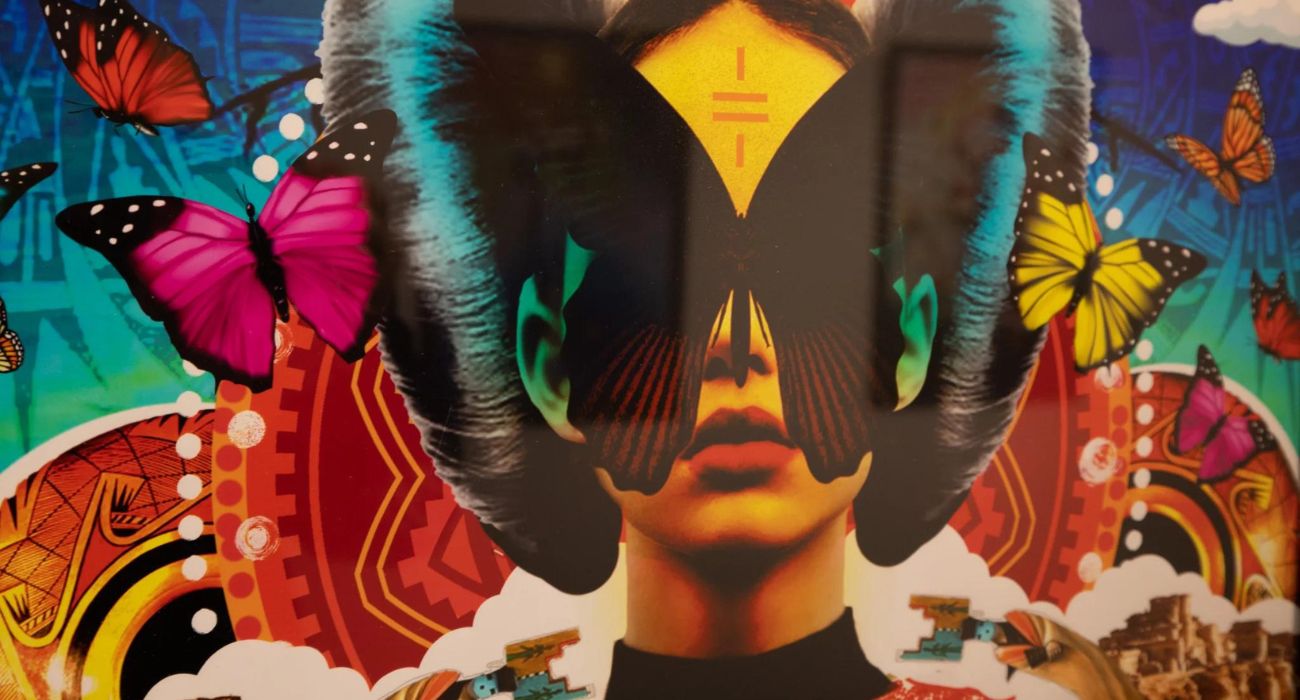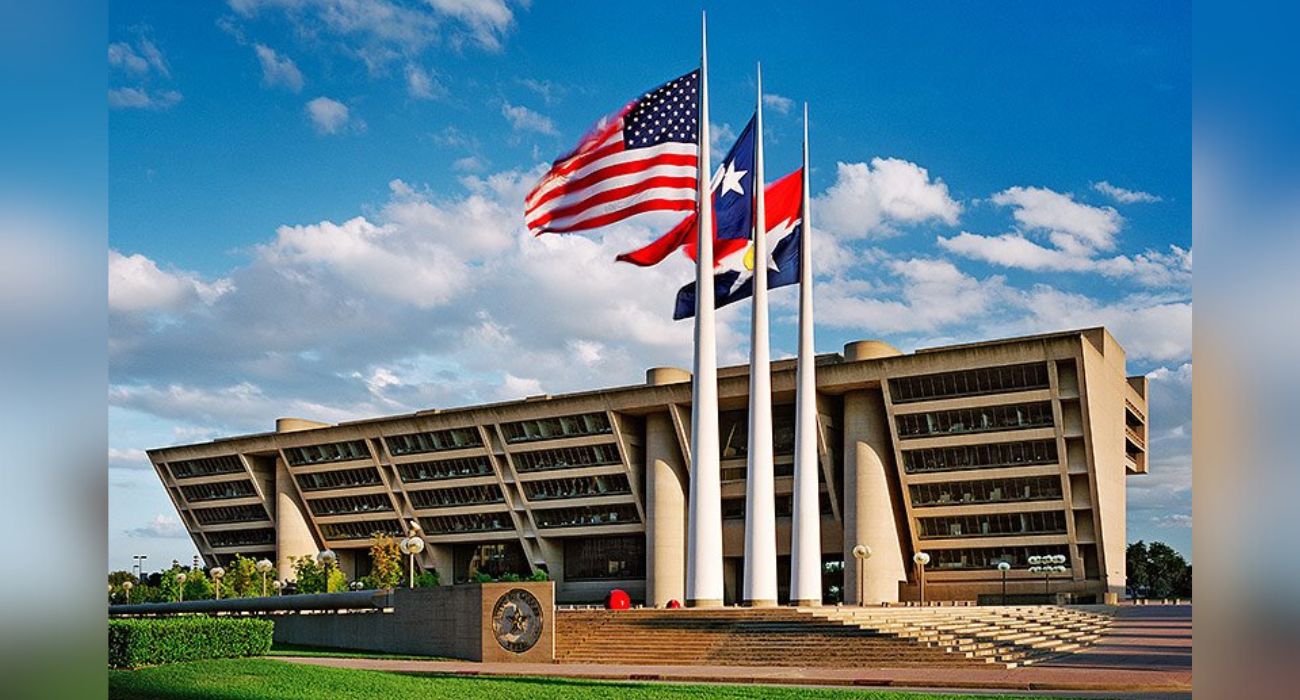Two art exhibits currently on display in Dallas-Fort Worth seek to honor and highlight the Indigenous peoples of North America.
Yahvlane & Ha Įlè — Art Without Borders was organized by the art advisory firm C2 and is available for viewing at the AT&T Discovery District in Dallas through January 8, 2023.
“The exhibition presents the work of Dallas-based artist Brian Larney, a Choctaw of Oklahoma and a citizen of the Seminole Nation,” the Discovery District website states. “His work explores racial identity, cultural struggles, and the history of his native nations.”
The exhibit acknowledges the Caddo, Wichita, and Kickapoo tribes as the original stewards of the land that is now North Texas and Oklahoma. Larney pointed out to NBC 5 DFW that the state’s name, Texas, is derived from the Caddo word “teyshas,” which means “friends.”
Yahvlane, which means “Yellow Wolf” in Seminole, is Larney’s tribal family name. Larney, who serves as the Chair of American Indian Heritage Day in Texas, seeks to represent truth for American Indians.
“You’re part of a community. For me, I try to make sure to preserve the voice for the community, but as well as look through the lens of equity and equality to sure we’re represented in the best way,” Larney said to NBC 5.
In addition to Larney’s works, the exhibition includes Ha Įlè, an “augmented reality sculpture by Texas artist Eric Wagliardo and First Nations interdisciplinary artist Casey Koyczan.
“The project serves to further the cross-border cultural dialogue,” the Discovery District website states.
Speaking with Light: Contemporary Indigenous Photography is on display at the Amon Carter Museum in Fort Worth through January 23, 2023. The exhibit features works by more than 30 Indigenous artists and includes photographs, videos, three-dimensional works, and digital activations.
The co-curator of the exhibit and the senior curator of photographs at the Carter, John Rohrbach, shared that the display is a reconsideration of how Indigenous people are depicted in art. While reassessing photographs already at the museum, Rohrbach says he realized that almost all of them were made by European-Americans.
“Our initial plan was to ask what it means to photograph as outsiders to the cultures one is depicting and to have the show’s last section flip the conversation by showing photographs created by Indigenous artists over recent decades,” Rohrbach said. “After consulting with Indigenous scholars across the country and recognizing the diversity and vitality of this contemporary work, we decided to refocus our attention.”
“The photographs and videos filling Speaking with Light reflect insiders’ views of Indigenous cultures and sitters. Rather than one voice, the works come from many cultures and perspectives,” he continued.
The Speaking With Light exhibit can also be viewed virtually on the Amon Carter Museum website.






